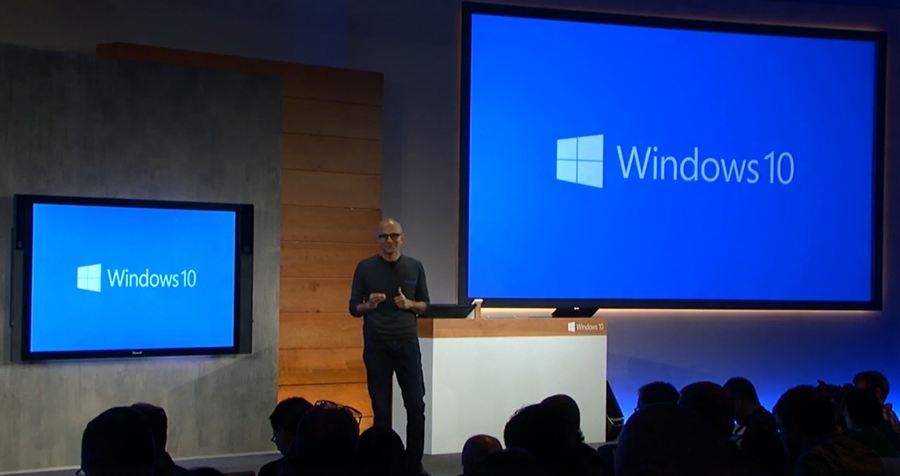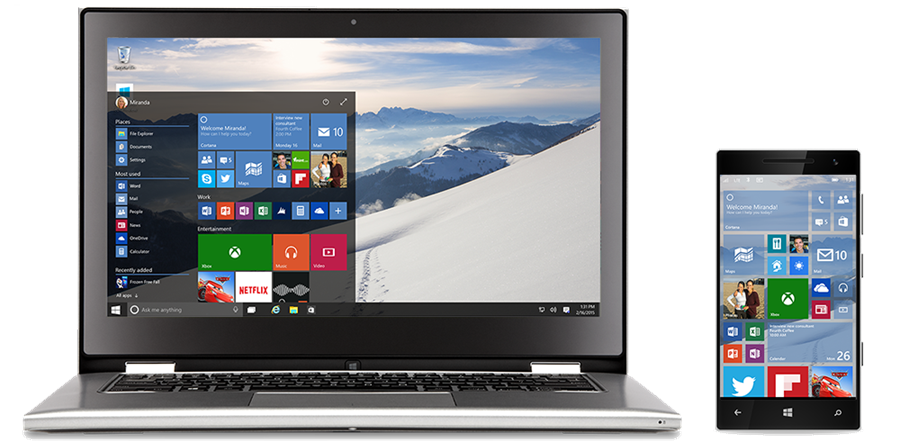CEO of Microsoft, Satya Nadella says with Windows as a Service, customers will get a continuous stream of innovation. This is a result of dramatic changes made to the way the company distributes updates. Learning from the experience with Windows XP and Windows 7, it’s clear Microsoft doesn’t want a repeat of large parts of their user base lagging behind.
There’s some new terminology being used in regards to Windows 10 that’s confusing some users. Windows as a service can mean a lot of different things to different people, services is something we understand that we access, but down own and it’s possible Windows licencing will get creative about how we pay for Windows. Right now we know the OS will be free to upgrade for the first 12 months, but after that it’s not clear. What is clear is that most users will get the new OS on new machines, so while the price for the OEMs may also shrink, it’s unlikely to be a big change for users.
The greatest change under the ‘Windows as a service’ will come in the form of updates. We don’t think about what version of Chrome we use because Google update it in the background. Nobody questions it, it just happens and Microsoft want the same for Windows.
Once a Windows device is upgraded to Windows 10, Microsoft will keep it current for the supported lifetime of the device at no additional charge. We’re very comfortable with our phones getting better over time with new features and functionality and Windows is set to do the same. Microsoft are committing to rolling out new features when they’re ready, not waiting for the next major release. This is Windows as a Service.
The biggest opportunity here is for developers, ensuring the largest possible user base is on the latest version is a huge win. There’s billions of Windows devices on the planet, but only a few hundred million running Windows 8 or later. With universal Windows apps that work across the entire device range, developers can build one app that targets the broadest range of devices – including the PC, tablet, phone, Xbox, the Internet of Things, and more.
Perhaps the most difficult and ambitious change is for enterprise customers. ICT departments have long been the blocker in the process in getting updates to users in an effort to secure the network and devices. In reality, a lot of updates aren’t rolled as fast as they should be, leaving known, patched vulnerabilities.
Microsoft say they will support the way many businesses work today, with long-term servicing for their mission critical environments. However, with Windows 10, comes a massive shift in the recommended best practice. Microsoft are recommending enterprise devices connect directly Windows Update to ensure they’re kept up-to-date with the latest security and productivity improvements as soon as they are available.
This raises a number of questions, the first being ICT admins are doing themselves out of a job by moving to Windows 10. In reality, I don’t think this is the case, they should really be able to focus their time and energy on more important tasks instead of micro-managing updates. The second is the question around bandwidth. Right now organisations typically download updates once through tools like WSUS through SCCM or InTune, then deploy to specific machines over the LAN. Microsoft’s new suggested model would have hundreds or thousands of machines connect to Microsoft servers to pull down the same update. This seems incredibly wasteful from a bandwidth point of view, so lets hope there’s enough smarts in the system to deal with this intelligently, perhaps download at 3am, as not to impact internet speeds of workers at 9am.
Business customers will be able to opt-in to the fast-moving consumer update pace, or lock-down mission critical environments to receive only security and critical updates to their systems. And businesses will have an additional option for systems that aren’t mission critical, but need to keep pace with the latest innovations while having the benefit to install updates after they have been tested in the broad market. And the choice isn’t one or the other for businesses; we expect that most corporations will require a mix of these options to accommodate their business scenarios. Take for example an investment bank, where mission critical systems on the trading floor receive only security updates, whereas mobile devices for financial advisors are kept up to date with the latest feature innovations – enabling the appropriate pace of updates for each device.
This fundamental change to the strategy for business will certainly raise some eyebrows. It’s not quite Microsoft extending the middle finger to businesses, but it’s pretty close. This a user-focused move and I’d suggest anyone who is planning on standing in the way of a more direct Microsoft to consumer relationship should get ready for a battle.
You can learn more about Windows 10 in enterprises here.


